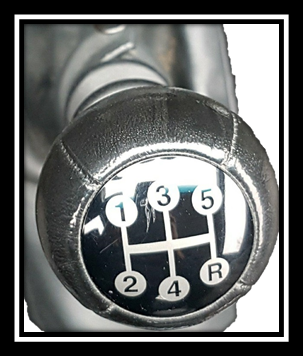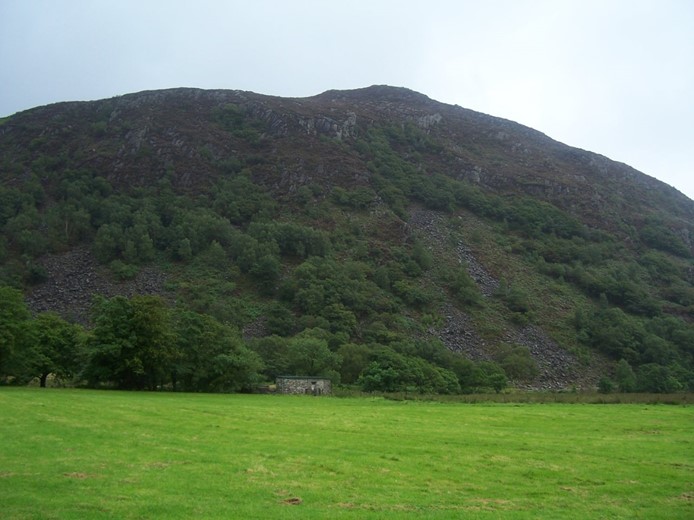How to Drive a Standard Transmission Vehicle
The aim of this article is to relay the concept to people who do not currently drive a standard car, but would like to be able to for renting a car abroad, or purchasing and learning to drive a standard at home. In Europe standard cars are the norm, whereas automatic cars are the norm in North America.

1/This is the car we rented in France last year. It would have been harder to rent an automatic car, so driving standard is a good skill!
What does standard and automatic mean?
These terms refer to standard transmission and automatic transmission. The difference is whether you change the gears while you are driving or the car does it automatically. Changing the gears yourself can have many advantages like improved control of the car and better fuel efficiency. Saying that, driving a standard car does take more practice than an automatic.
Familiarize yourself with the layout

 At Your Hands:
At Your Hands:
- The gear shifter (pictured above): this shows the 5 forward gears and 1 reverse gear and their positions. This is what you will move when shifting gears.
- The park brake: this stops the car from rolling. This will be to the right of your seat in a left-hand drive car (North America).
 At Your Feet:
At Your Feet:
- There will be three pedals now. The pedal to the furthest right is still the accelerator like in an automatic car. The pedal in the middle is the brake, and the pedal to the left is the clutch.
|
CLUTCH |
BRAKE |
ACCELERATOR |
Starting from a Stand-Still
- Start the car: to start a standard car put your left foot on the clutch (furthest left pedal) and put your right foot on the brake (middle pedal). The clutch must be held down while starting the car, and the brake is to ensure that it does not move.
- STILL keeping your feet on the clutch and brake, practice shifting with the gear stick. Get a feel for where each gear is. See if you can do it without looking. Figure out how to put it into reverse- this is important because it varies between most cars. There is usually an extra step that you must complete before putting the car into reverse. This is a safety mechanism so that you don’t go backwards by accident, but it is important to know how it works before you need it. In my old car there was a ring on the gear shaft that you had to raise before putting it into reverse gear. Now is a good time to figure this out.
- Make sure you are wearing your seatbelt!
- Stilll holding the clutch and brake, put the car into first gear. This will normally be the top-left position of the gear stick. If you are on a flat surface and take your foot off the brake, you will not go anywhere. If you are on an incline and take your foot off the brake you could roll backwards, so be aware of this. The trick to getting it going is finding the balance between letting go of the clutch and pushing down on the accelerator at the same time (one with each foot). If you take your foot too fast off the clutch without enough accelerator while it is in gear you will stall and have to restart the car. If you push too hard on the accelerator you will go too fast and jerk the car. Every car has a different feel, and even experienced drivers can stall a standard vehicle the first time they drive it until they get a feel for the pedals. I would say that I let go of the clutch a little faster than I push on the accelerator.
- Your left foot will come completely off the clutch and your right foot will control the accelerator similar to an automatic car. The next step is knowing when to shift.
When Should I Shift?
I think that shifting is easier than getting going initially. My first car (a standard) had a problem with the cluster (where the odometer etc. are) and so the lights didn’t work. This meant that at night when I was practicing I couldn’t see what the speedometer said, so I had to listen to the car for when to shift and I think this helped me in the long run. You can hear it in the car when it needs to shift. You can hear it in an automatic car too, but you don’t have to do anything about it. For me I shift at approximately the following speeds:
Shift from:
- 1st to 2nd gear: 20-30 km/h
- 2nd to 3rd gear: 40-50 km/h
- 3rd to 4th gear: 55-65 km/h
- 4th to 5th gear: 70-80 km/h
Anything higher than 80 km/h stay in 5th gear. Note: our car in France had 6 gears, so this can change, but many standard cars have 5 gears.
When you are driving along you will have your foot on the accelerator and nothing else. To shift: place your left foot on the clutch and take your right foot off the accelerator. Change the gear you need. Gradually take your left foot off the clutch and right foot onto the accelerator in a balance again, but it won’t be as hard as starting it since the car will already be in motion.
If you are shifting down, do the same but as your left foot is on the clutch your right foot goes on the brake.
Rules to Remember:
- You need the clutch to change gears
- No clutch + no motion = stalled car

2/ Don’t forget the rules when driving on an incline! (Picture taken in North Wales)
Things to Remember:
- Parking brake: This is important for holding the car still. A standard car in neutral means that it is not in gear, but this is not the same as “P” in an automatic. It could still roll on a hill, so put the park brake on. BUT remember when you jump in that you must release the park brake before moving. I do sometimes forget this myself, because I used to shut off my old car in gear, which does hold it in place more. This was fine for the flat prairies of Manitoba, but for anywhere with any incline, putting on the park brake is safer.
- Command start standard: I never had command start in my standard car, but this is something to think about if you ever have it put in. You will need to remember how you want it to be when you turn it off for the night.
I have written this little table a summary of things to remember and not to do while out driving your standard vehicle!
|
Action |
Good |
Bad |
|
Turn on the car |
Hold the clutch and BRAKE down. |
Turning the car on only holding down the clutch while on an incline (without pressing the brake pedal or having the park brake on) will result in you rolling backwards! |
|
Begin moving from a stand still |
Put the car in first gear. Slowly take your foot off the clutch while equally pushing down on the accelerator. |
If you put it in gear, then take your foot off the clutch without pushing on the accelerator it will stall. If you accidently put it into 2nd gear instead of 1st you will stall even if you push on the accelerator. (Once you get used to driving standard it is possible to begin in 2nd gear, but this requires more accelerator- avoid it in the beginning and start from 1st gear) |
|
Shifting up gears |
When you are at the right speed shift up one more gear |
If you skip gears (ex. go from 2 to 4) your RPM (revolutions per minute) will go crazy and you won’t be using the car optimally. (Again, this is possible to do if you are at the right speeds, but avoid in the beginning.) |
|
Shifting down gears |
Slow down your speed either by letting go of the accelerator or pressing a little on the brake, then press in the clutch and shift down a gear. |
If you stay in a high gear and brake too much you might stall the car; your gear should match your speed (ex. Don’t be in 4th gear while going 30 km/h) |
|
Stopping at a traffic light |
You can keep your feet on the brake and clutch while at a stand-still and the car is running. They say it is better for the car if it is in neutral, so take it out of all gears (it will be a little more wobbly now) and your foot can come off the clutch (as long as you aren’t on an incline!) Remember you will have to get into first gear quickly when the light goes green. |
If you are at a traffic light and you take your foot off the brake while in gear the car will stall. If you go into neutral and don’t have your foot on the brake you could roll backwards if on an incline. |
|
Getting moving at a traffic light |
Begin just like you did initially. Make sure not to push too hard on the accelerator as you get going; you could rear-end the person in front of you. |
Make sure coming off the clutch and onto the accelerator are both smooth. |
|
Stopping the car |
When you stop the car, you can turn it off while in gear or out of gear. It is a very good habit to put the park brake on before getting out. Remember what you did when you get in again- if you forgot it was in gear it could stall if you don’t have your foot on the clutch. |
Make sure the car isn’t in neutral without the park brake on an incline, it will roll! |
Have fun and enjoy the new skill you are learning!
Where did you learn to drive standard?
